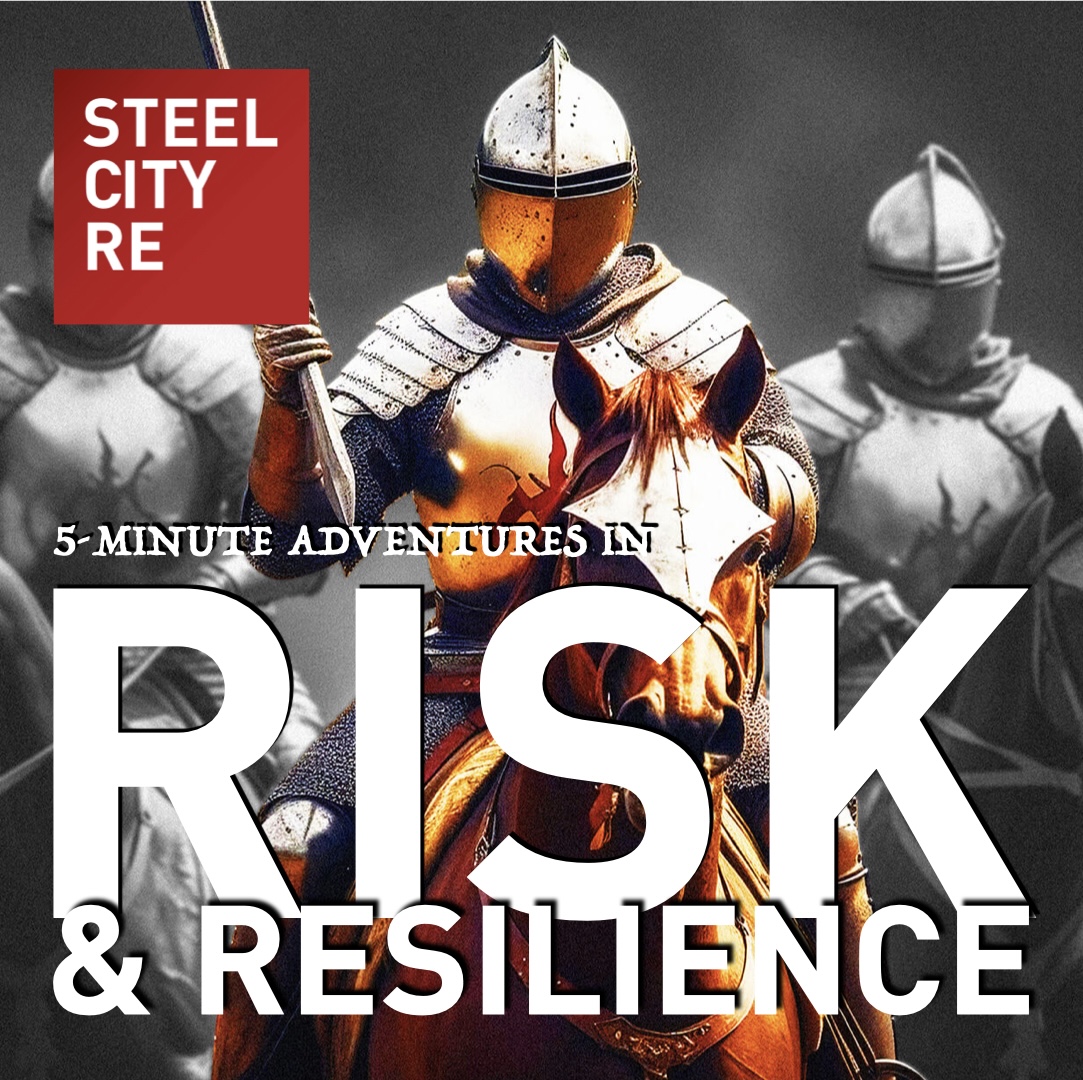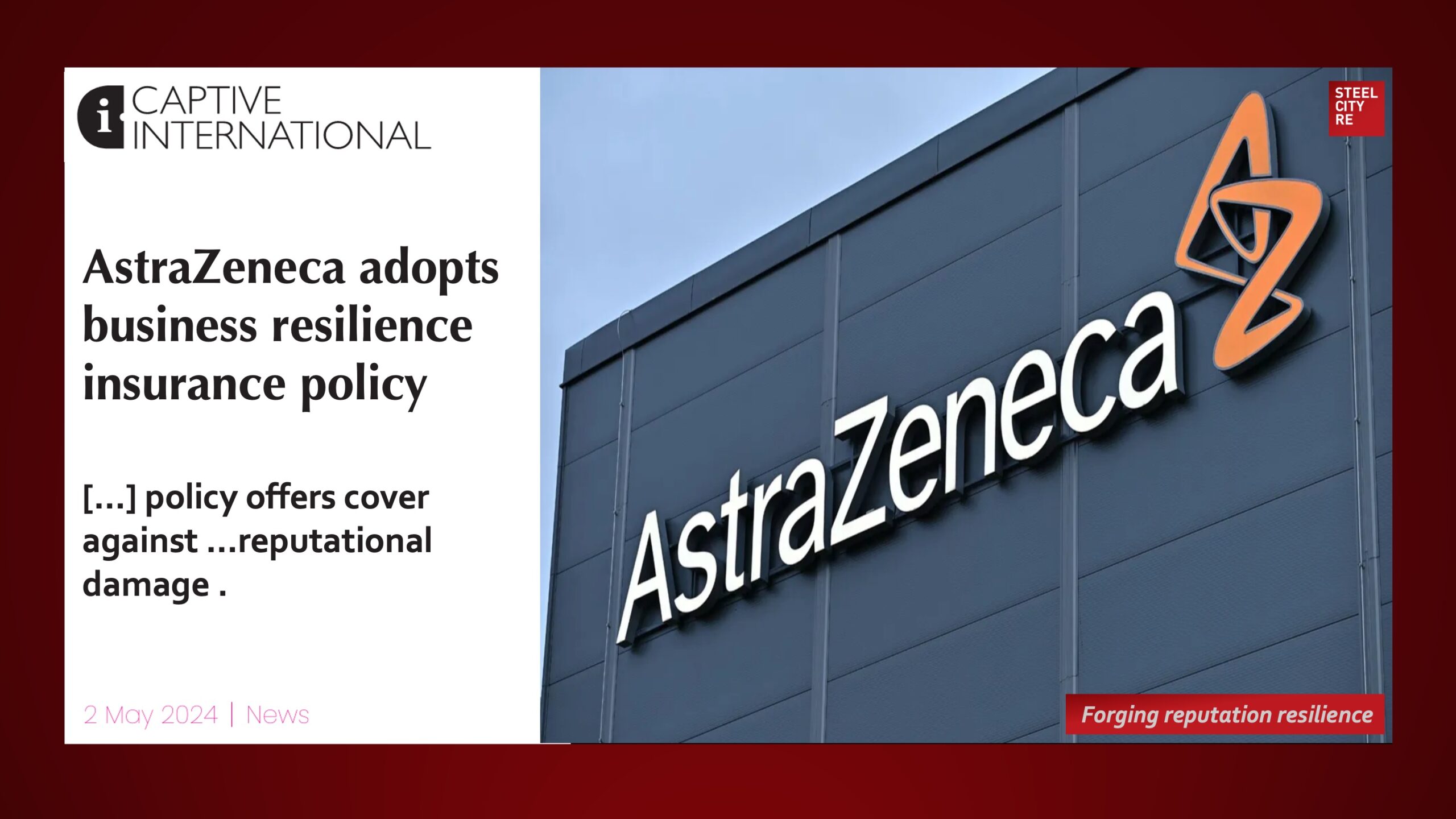AstraZeneca Adopts Business Resilience Outcome Policy
AstraZeneca Adopts Business Resilience Policy. An exemplary resilience strategy would use insurance tactically for mission-critical risks and reinsurance strategically to authenticate thoughtful risk management and dutiful governance over all that is mission-critical. It is a risk strategy that would appeal to investors focused this year on how firms are strengthening financial resilience, and it would speak to their concerns about reputation risk management. This week, AstraZeneca’s risk team headed by Kevin Steed gave the world a sneak-peak into the future of strategic risk management and insurance. They placed three mission critical risks—supply chain, product withdrawal, and reputation—in their captive on an outcome (parametric) basis, reinsured it with three of the largest European carriers, and publicized their successful solution. Click here for more success stories.
Click on the image above to read more (No Paywall).

…the outcome-based (parametric) policy offers cover against supply chain disruption, reputational damage and product withdrawal.
Captive International: May 5, 2024

About Steel City Re. With reputation risk forecasting, management, and insurance, Steel City Re helps companies build and prove to stakeholders their thoughtful risk management and dutiful governance over all that is mission-critical. The benefit is an insurance-authenticated story stakeholders can appreciate and value.
About Steel City Re’s Podcast: 5-minute Adventures in Risk & Resilience
In our world of polycrises, perils are complex, interconnected, and costly. Gone are the days when reputation damage could be offset by insurance and apologetic communications. With business viability in jeopardy, strategic risk professionals are preemptively building programs to identify reputation exposures in operations and governance, closely measure stakeholder passions, and communicate operational foresight and resilience with the imprimatur of third-party parametric reputation insurance. Each 5-Minute Adventures in Risk & Resilience story takes you into the boardrooms and conversations where these successful strategies are being devised.
5-minute Adventures in Risk & Resilience is syndicated through all major podcast distributors. Subscribe through your favorite application such as Apple Podcasts, Spotify Podcasts, YouTube, Zencast, Amazon Music & Audible or wherever you get your podcasts.

Reputation is Mission-Critical
Today’s sophisticated risk managers are strategic corporate talents, helping the C-suite and board meed stakeholder expectations for resilience. They know that enterprise damage from reputation risks might be their greatest and longest lasting peril, so they monitor for red flags. They foster a culture that respects those warnings and facilitate processes to mitigate those risks. Their diligence strategically builds enterprise-wide resilience that informed stakeholders can appreciate, and they use insurance two ways: operationally, to foster resilience; and strategically, to authenticate their thoughtful risk management and dutiful governance systems.
The results of strategic reputation risk management are evident in reputation resilience. More than crisis recovery, they include customers buying, not boycotting; employees working, not fleeing; investors buying, not selling; lenders adjusting interest rates down, not up; regulators deferring, not enforcing; and social license holders acquiescing, not protesting.
Having a robust Reputation Resilience Program in place offers, amongst other benefits:
- Protection for the company, its staff, executives, and board from litigation and regulatory challenges
- Improved governance processes and better enterprise risk management protocols; i.e., measuring reputational risk
- Establishment of an agile operating, communications, and decision-making team, with clear roles and responsibilities, trained and ready to handle all reputational threats; i.e., a reputation risk management framework
- Proactive management of risks that could give rise to delays or derailing concerns around new product and strategic partnership launches
- Captured behavioral economic value from stakeholders; i.e., value of reputation
- Reduced costs of debt and risk transfer while boosting equity value; i.e., boosting reputational value
A hazard of reputation risk is a lurking gap between stakeholder expectations and reality. Another hazard is the emotional intensity associated with expectations. The expected surge in litigation in 2024 around environments, social and governance issues reflects both that emotional intensity and is one manifestation of the anger from disappointed stakeholders. This video explains the behavioral economic features of the many perils of reputation risk.
Mitigating risk strategically through expectation management and operational adjustments evinces thoughtful management and dutiful governance. Financing such risks evinces prudence, and doing so publicly enables stakeholders to appreciate and value the effort.
One Question
Reputation risks are prevalent, material, and place both corporate viability and profitability at risk. Is enhancing and promoting the quality of your risk management program part of your strategy?

